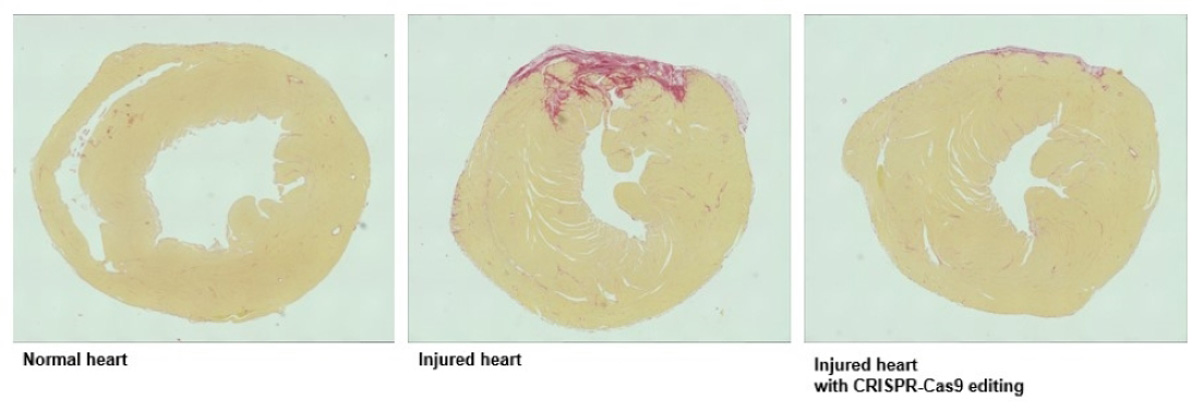
CRISPR Therapy May Help Repair Damaged Tissue After Heart Attack
February 15, 2023| |
Every year, cardiovascular disease, also known as heart disease, accounts for 32% of all deaths around the world, according to the World Health Organization. Researchers from the University of Texas Southwestern Medical Center reveal that a new CRISPR-Cas9 gene editing therapy can help treat heart disease and repair damaged tissue immediately after a heart attack using a mouse model.
According to Dr. Eric N. Olson, senior author of the new study, cardiovascular disease is the most frequent cause of death worldwide. However, treatment options are limited. He explained that gene editing allows targeting disease mediators with high specificity only in the injured organ.
In a mouse model, Dr. Olson and his team studied their new CRISPR-Cas9 gene editing therapy. The components of the gene editing system were packaged into a viral delivery system that targets the heart of mice and large mammals. Dr. Olson explains that the guide RNA corresponds to a specific region in the genome and brings the base editor in close contact with a specific gene and modifies it. The team used a specific guide RNA to target the base editor to the CaMKIIδ gene. The base editor modified the CaMKIIδ gene to prevent chronic overactivation of the CaMKIIδ protein that is an inducer of cardiac disease.
The research team also discovered that their new CRISPR-Cas9 therapy helped protect mice from ischemia/reperfusion injury (IRI) due to heart disease. The team also found that injecting mice with gene editing reagents soon after an IRI helped them recover cardiac function after severe damage, such as from a heart attack.
For more details, read the articles in UT Southwestern Medical Center and Medical News Today.
| |
Biotech Updates is a weekly newsletter of ISAAA, a not-for-profit organization. It is distributed for free to over 22,000 subscribers worldwide to inform them about the key developments in biosciences, especially in biotechnology. Your support will help us in our mission to feed the world with knowledge. You can help by donating as little as $10.
-
See more articles:
-
Gene Editing Supplement (February 15, 2023)
-
Research and Tools
- CRISPR-Cas9-mediated Editing of BADH2 for Better Rice Aroma
- Europe’s First Gene-edited Wheat Field Trial a Success
- Report Projects the Future of CRISPR-Cas Market
- CRISPR-based Tool to Help Tackle Deadly Mosquito-borne Diseases
- CRISPR Therapy May Help Repair Damaged Tissue After Heart Attack
-
Trends and Impact
- India’s DBT to Enhance Genome Editing Capacity of Scientists Through Research Grants
-
Read the latest: - Biotech Updates (December 17, 2025)
- Gene Editing Supplement (December 17, 2025)
- Gene Drive Supplement (February 22, 2023)
-
Subscribe to BU: - Share
- Tweet

